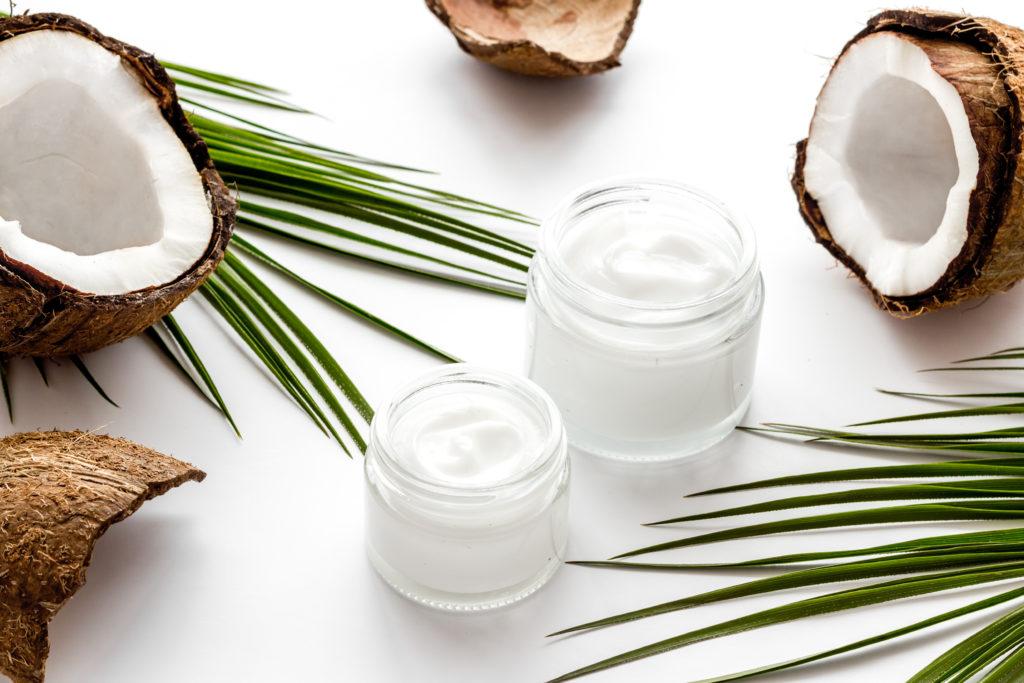Error: Contact form not found.

Let’s explore the unique properties of coconut, which are used in cosmetics for the production of shampoos and creams.
The coconut belongs to the Areca family. The tree reaches from 10 to 20 meters and has a slender trunk at the base. The fruit takes the form of an oval drupe with a seed called a coconut. The coconut consists of an outer layer (exocarp), an intermediate layer (mesocarp), a hard shell (endocarp), a white edible pulp layer (endosperm) and coconut water right in the middle. Its name comes from the Portuguese word for “monkey” and was inspired by the three pores along the fruit that resemble a monkey’s mouth. Coconut has a wide range of uses – coconut milk is used in Asian cuisine, but also as a beverage and an effective antidote to many poisons. Coconut oil as a moisturizing substance is widely used in cosmetics. Coconut roots are used to make toothbrushes or toothpaste. Coconut has a strong antiseptic, bactericidal and diuretic effect, which is why it is also used in traditional medicine. In tropical countries, indigenous people use coconut to treat asthma, bronchitis, treat bruises, constipation, coughs, fevers or colds.
It is well known that coconut is particularly appreciated for its cosmetic properties. It improves skin firmness thanks to the content of carbohydrates, proteins and fatty acids. Carbohydrates absorb and retain water under certain conditions. Some act as a film-forming and moisturising agent, helping to improve the biomechanical properties of the skin. Proteins lead to increased skin hydration and a lifting effect. They also have a smoothing and firming effect. The fatty acids contained in coconut help to increase skin hydration and have antiseptic properties. This knowledge was already known to the peoples of the tropics, who used coconut to effectively moisturize the skin.
Coconut or coconut oil is also a common ingredient in shampoos or hair cosmetics. This is due to the content of proteins that have a protective effect against environmental factors, repair the hair and increase its elasticity. They also reduce the risk of breaking them, which is crucial in the case of hair cosmetics. Proteins reach the hair roots, which means strengthening them from the inside. Coconut for hair is more of a revolutionary ingredient with a range of benefits.
According to a study by Keis, K et al. (2005), capillary adhesion was measured between hair fibres treated with different types of oil. Coconut oil makes this parameter decrease over time. In a study of coconut on hair, it was found that when exposed to heat there was a further reduction in adhesion for coconut oil. The deposition of oil on the hair fibre results in the formation of a thick film (approx. 0.5 μm) which covers the scaly structure of the hair. As the film becomes thinner with time and the application of heat, the hair structure becomes visible again. Therefore, coconut oil reduces capillary adhesion due to its ability to penetrate the hair, leaving a thin film on its surface. However, according to a study by Rele, AS & Mohile, RB (2003), coconut oil and coconut on hair were found to reduce protein loss from damaged and un-damaged hair.